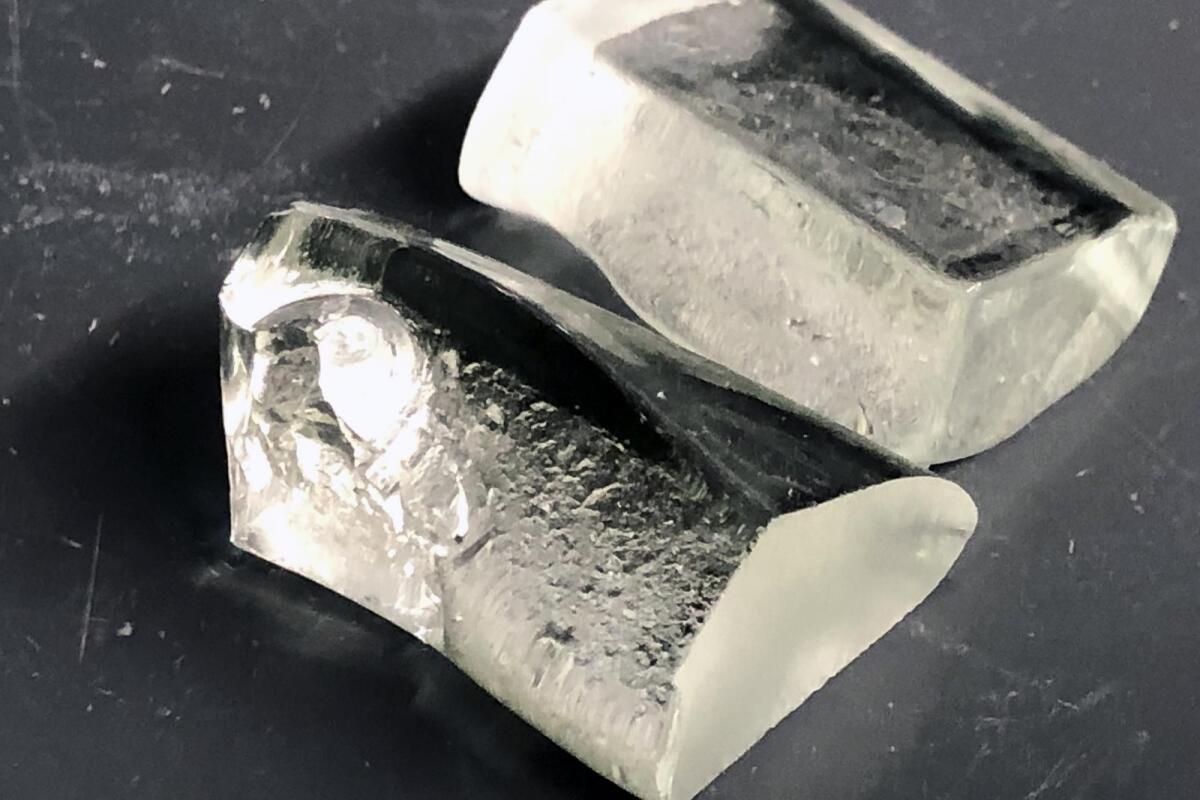
If this happens to be real, then it is huge. We so need a truly tough glass that acts more like steel. and this was never too much to ask as well.
Even better the carbonate is gone and we have a better melt temperature. Few understand the heat contortions needed to perfect glass making. We actually float it today on molten tin i do believe. that is way too hot.
i wonder if this is also amorphous as well/
LionGlass boasts 10x the strength of regular glass, greener production
July 03, 2023
Samples of LionGlass, a new material that's at least 10 times more crack resistant than regular glass, and far more environmentally friendly to produce
Adrienne Berard
https://newatlas.com/materials/lionglass-10x-strength-glass-greener/?u
Despite its many advantages, glass has one major Achilles' heel – it’s brittle. Now, engineers at Penn State have developed LionGlass, a new type of the material that’s not only 10 times more damage resistant, but requires significantly less energy to manufacture.
The most commonly used form of glass, which you’ll find in everything from windows to drinking glasses, is technically known as soda lime silicate glass. Manufacturing this common material requires furnaces that get up to 1,500 °C (2,732 °F), which of course consumes a lot of energy and releases a huge amount of carbon dioxide into the atmosphere. On top of that, this glass is made from quartz sand, soda ash and limestone, the latter two of which release CO2 when melted.
Now, Penn State researchers have improved the recipe to make glass that’s more environmentally friendly to produce, while also being much stronger. The family of new glass compositions, which the team calls LionGlass, swaps out the soda ash and limestone for non-carbonate materials – the exact composition of which is still undisclosed, due to the pending patent. Swapping out the carbonates not only cuts their direct emissions during melting, but lowers the required temperatures by up to 400 °C (720 °F). That in turn reduces the energy consumption by about 30% and as such cuts their emissions.
Better yet, some compositions of LionGlass were found to boast crack resistance that was at least 10 times higher than that of standard soda lime glass. The team tested samples under a Vickers diamond indenter, and found that the glass didn’t crack even under a force-load of 1 kg (2.2 lb) – by comparison, regular glass will start to crack under a load of just 0.1 kg (0.2 lb). And LionGlass’s crack resistance is likely even higher than that, but this was as high as the testing equipment could go.
"The improved damage resistance of LionGlass is due to the design of the glass network at the atomic scale," John Mauro, lead researcher on the project, told New Atlas in an email. "It has what we call 'intrinsic damage resistance,' meaning that it has modes of plastic deformation that allow for dissipation of externally applied energy from scratches, indentations, etc. This enables the glass to absorb a lot more energy before cracking. This property is intrinsic to the glass itself and does not rely upon extrinsic strengthening techniques such as thermal tempering, ion exchange, or lamination."
The team says that the benefits of LionGlass could be multiplied in the real world. Because of its higher strength, products made of the material can be thinner and lighter.
“We should be able to reduce the thickness and still get the same level of damage resistance,” said Mauro. “If we have a lighter-weight product, that is even better for the environment, because we use less raw materials and need less energy to produce it. Even downstream, for transportation, that reduces the energy required to transport the glass, so it's a winning situation for everyone.”
The team has filed for a patent on LionGlass, and hopes to be able to bring it to market soon.
No comments:
Post a Comment